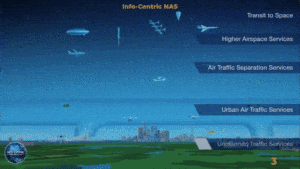
Here are some of the most effective types of content for the aerospace industry:
Technical Reports and Whitepapers
Technical reports and whitepapers are detailed, in-depth documents that provide information about specific technologies, products, or processes in the aerospace industry. These types of content are often used to establish thought leadership and demonstrate expertise in a particular area.
For example, a technical report might provide an overview of the latest advances in aircraft engine design or detail the features and capabilities of a new satellite system. Whitepapers might delve into the technical specifications of a particular product or technology and provide insights into how it can be used to solve specific problems in the aerospace industry.
To create effective technical reports and whitepapers, it’s important to have a deep understanding of the subject matter and to be able to communicate technical information in a way that is accessible and easy to understand for the target audience.
Case Studies
Case studies are real-world examples of how a company’s products or services have helped solve a specific problem or achieve a particular goal in the aerospace industry. These types of content can be very effective at demonstrating the value of a company’s offerings and building trust with potential customers.
For example, a case study might describe how a particular company’s aerospace materials helped improve fuel efficiency in aircraft engines, resulting in significant cost savings for the airline industry. Case studies can also be used to highlight successful partnerships between different companies in the aerospace industry, such as collaborations between engine manufacturers and aircraft manufacturers.
To create effective case studies, it’s important to choose examples that are relevant and interesting to the target audience, and to present the information in a clear and concise manner.
Infographics
Infographics are visual representations of data and information, and are a great way to simplify complex concepts or data sets in the aerospace industry. Infographics can be used to communicate key statistics, trends, or insights in a visually appealing and easy-to-understand way.
For example, an infographic might depict the history of commercial aviation, or the various components that make up an aircraft engine. Infographics can also be used to present data on the economic impact of the aerospace industry or to showcase the benefits of particular technologies or products.
To create effective infographics, it’s important to choose data and information that is relevant and interesting to the target audience, and to present it in a visually appealing and easy-to-understand way.
Videos
Videos are a highly engaging type of content that can be used to showcase new products or technologies, provide instructional or educational content, or even take viewers on a virtual tour of aerospace facilities. Videos can be shared on social media, websites, or through email marketing campaigns.
For example, a video might showcase the features and capabilities of a new aircraft or provide an overview of a particular manufacturing process. Videos can also be used to highlight the culture and values of a particular aerospace company, or to provide insights into the day-to-day operations of an aerospace facility.
To create effective videos, it’s important to choose a clear and compelling message and to use high-quality visuals and sound. Videos should be engaging and informative, and should be tailored to the interests and needs of the target audience.
Blogs
Blogs are a versatile type of content that can be used to provide industry news and insights, share company updates, or provide educational content for the aerospace industry. By regularly publishing blog content, companies can establish themselves as thought leaders and stay top of mind with their target audience.
For example, a blog might provide an analysis of a recent industry trend or offer tips and advice on how to improve aircraft maintenance procedures. Blogs can also be used to showcase company culture and values, or to provide updates on new products or services.
To create effective blog content, it’s important to choose topics that are relevant and interesting to the target audience, and to provide valuable insights and information that can help readers in their jobs or careers. Blog content should be well-written and engaging, and should be optimized for search engines to ensure maximum visibility and reach.
Social Media Posts
Social media platforms like LinkedIn, Twitter, and Instagram are great channels for sharing industry news and updates, highlighting company culture, and engaging with customers and prospects. Social media can be used to drive traffic to a company’s website or other content, and can be an effective way to build brand awareness and engagement.
For example, a social media post might share a news article about a new aerospace technology, or highlight a company’s participation in an industry event. Social media can also be used to share images and videos that showcase new products or facilities, or to provide behind-the-scenes glimpses of day-to-day operations in the aerospace industry.
To create effective social media content, it’s important to understand the specific requirements and limitations of each platform, and to tailor content to the interests and needs of the target audience. Social media content should be engaging, shareable, and optimized for maximum reach and engagement.
Optimizing Aerospace Content for Search Engines
In addition to creating different types of content, it’s also important to optimize content for search engines. This involves using relevant keywords and phrases in titles, headings, and content to help search engines understand the context and relevance of the content.
For example, a blog post about aircraft engine maintenance might include keywords like “aircraft engine,” “maintenance,” and “best practices” to help it rank higher in search engine results for those terms. Similarly, an infographic about the economic impact of the aerospace industry might include keywords like “aerospace industry,” “economic impact,” and “statistics.”
When optimizing content for search engines, it’s important to strike a balance between keyword optimization and readability. Content that is stuffed with too many keywords can be difficult to read and may turn off potential customers or prospects. On the other hand, content that doesn’t include enough keywords may not rank as highly in search engine results.
Creating effective content for the aerospace industry requires a deep understanding of the target audience, a commitment to providing valuable and informative content, and a willingness to experiment with different types of content and distribution channels. By following best practices like choosing relevant and interesting topics, using high-quality visuals and sound, and optimizing content for search engines, aerospace companies can establish themselves as thought leaders, build brand awareness, and drive engagement with their customers and prospects.






